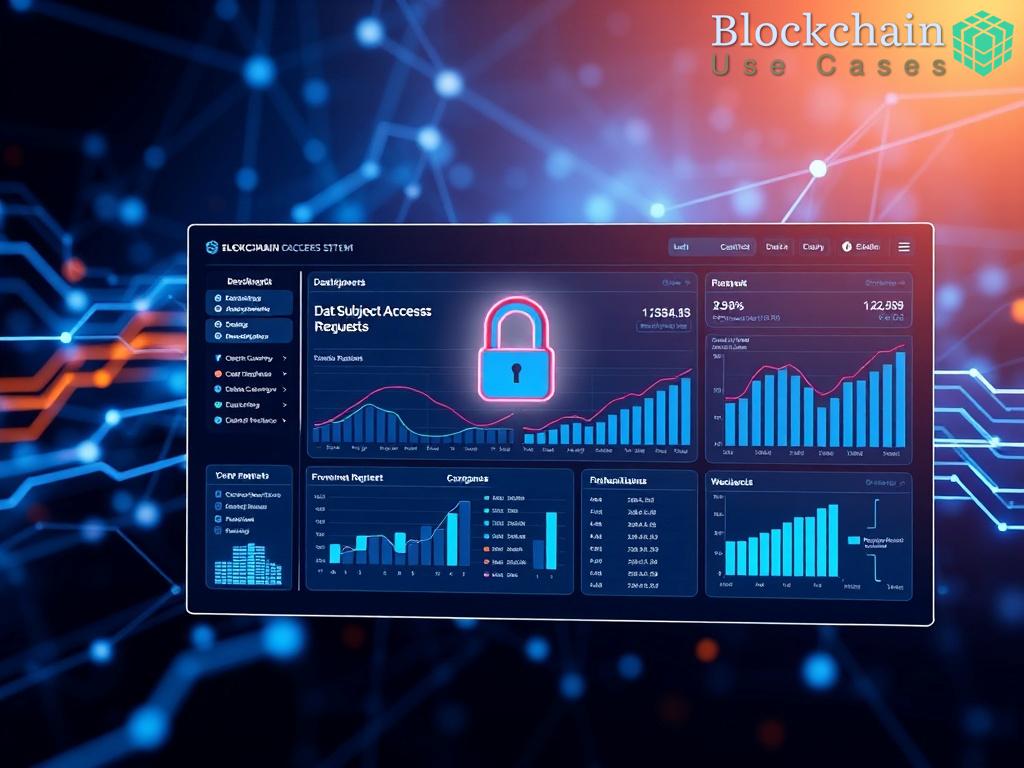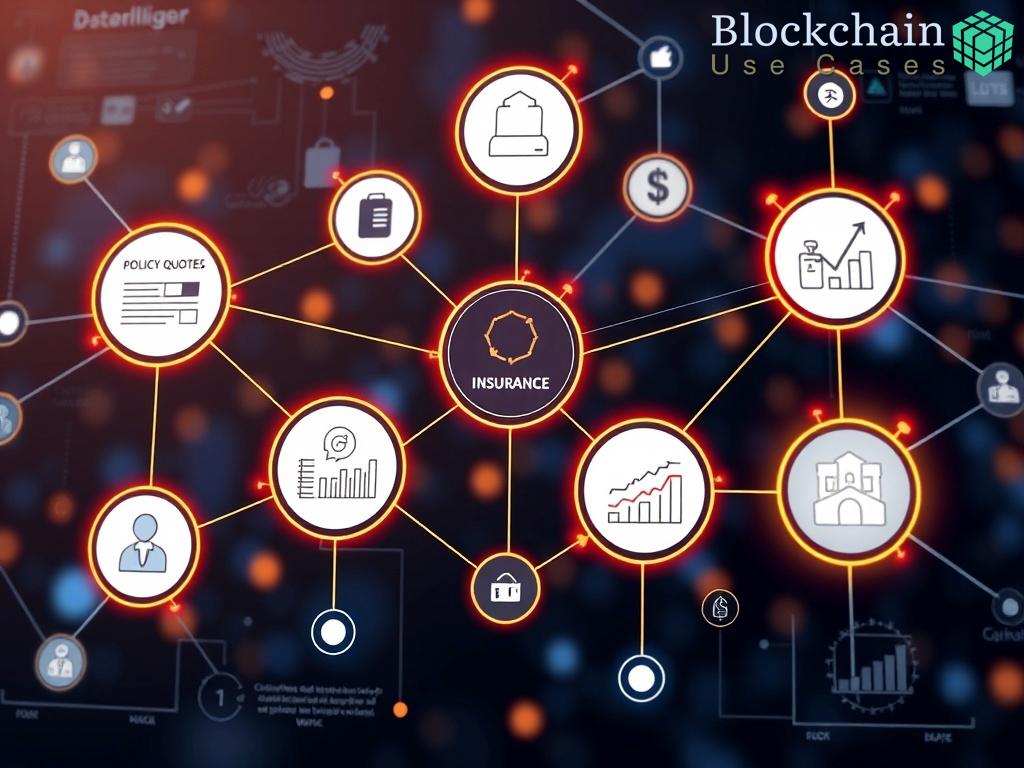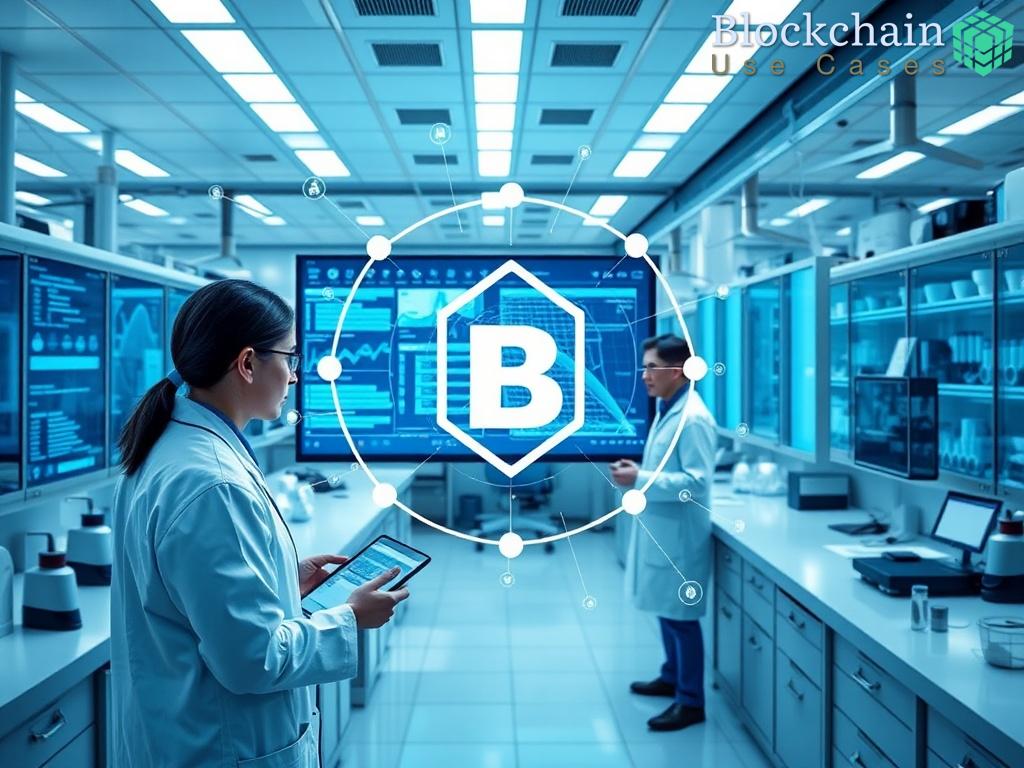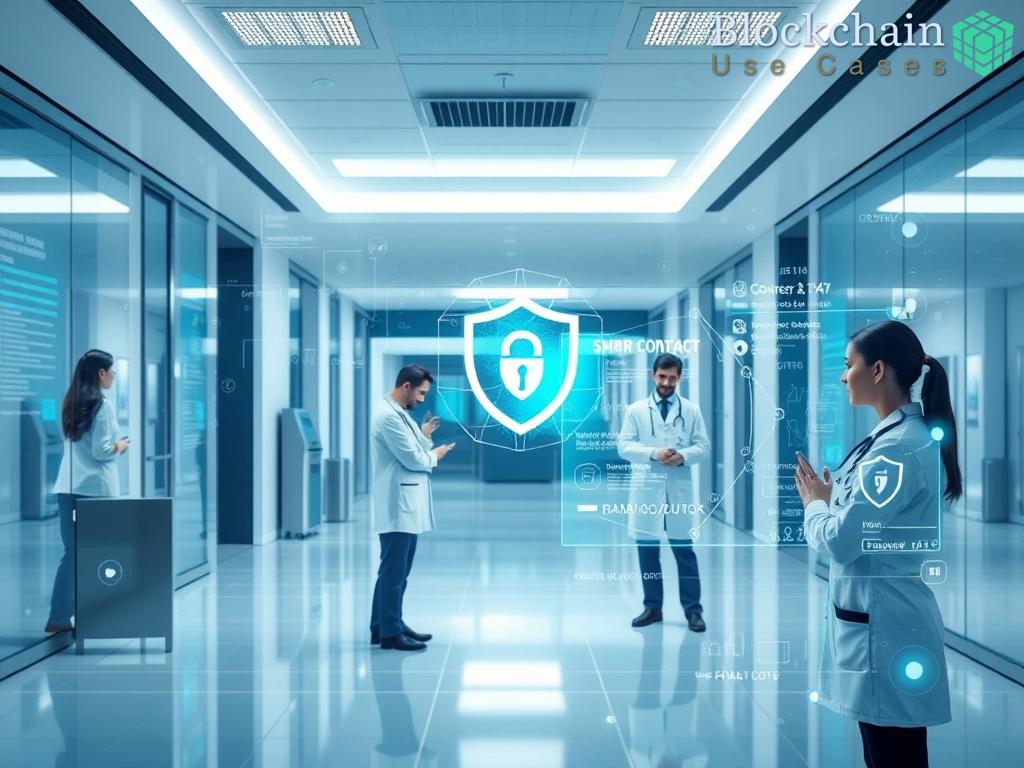Enhancing Data Integrity with Blockchain

Transforming Data Management in Clinical Labs
The accuracy and integrity of data in clinical laboratories are paramount, especially when complying with the Clinical Laboratory Improvement Amendments (CLIA). As laboratories generate vast amounts of data, traditional data management systems often struggle with issues such as data tampering, loss, and inefficiencies. Blockchain technology emerges as a revolutionary solution, providing a decentralized and transparent framework that enhances data integrity and security.
Blockchain’s Immutable Ledger
At the heart of blockchain technology is its immutable ledger system. This characteristic ensures that once data is recorded on a blockchain, it cannot be altered or deleted without consensus from the network participants. In clinical laboratories, this means that once test results and compliance data are entered into the system, they remain unchanged, preserving the integrity of sensitive information.
Furthermore, the decentralized nature of blockchain mitigates the risks associated with single points of failure found in conventional databases. By distributing data across a network of nodes, any attempt to manipulate the data would require altering the records on every node, making fraudulent activities virtually impossible.
Benefits of Blockchain in CLIA Compliance
Implementing blockchain technology in clinical laboratories offers numerous benefits, particularly in enhancing compliance with CLIA regulations. Below is a list detailing the primary advantages:
- Increased Transparency: All transactions and data entries are visible to authorized parties, fostering trust and accountability.
- Real-time Auditing: Blockchain allows for continuous monitoring of compliance-related data, enabling quick identification and rectification of discrepancies.
- Streamlined Processes: Automated smart contracts can facilitate faster processing of laboratory data, reducing administrative burdens.
- Enhanced Security: Cryptographic measures protect data from unauthorized access and cyber threats.
The integration of blockchain in clinical laboratories not only streamlines operations but also builds a robust framework that ensures adherence to CLIA standards, ultimately improving patient safety and care.
Streamlining CLIA Compliance through Distributed Ledger Technology
As the healthcare landscape evolves, clinical laboratories are increasingly seeking innovative solutions to navigate the complexities of regulatory compliance. Blockchain technology is poised to transform this space by offering a robust framework for managing CLIA data with unparalleled efficiency and accuracy. By utilizing a distributed ledger, laboratories can significantly streamline their compliance processes, ensuring that they meet stringent regulatory requirements while enhancing operational effectiveness.
One of the most significant advantages of blockchain in the context of CLIA compliance is its ability to facilitate real-time data sharing. Unlike traditional systems that often rely on batch processing and manual entry, a blockchain-enabled platform allows for instantaneous updates and access to laboratory data. This not only expedites the verification of compliance-related information but also enables laboratories to maintain an up-to-date audit trail. Consequently, stakeholders can swiftly respond to inquiries or audits, thereby minimizing disruptions and enhancing overall productivity.
Eliminating Redundant Processes
Incorporating distributed ledger technology can lead to the elimination of redundant processes that often plague clinical laboratories. Traditional compliance frameworks typically involve multiple intermediaries, each adding layers of complexity and potential for error. With blockchain, all authorized users have access to a single, immutable source of truth, significantly reducing the time and resources spent on reconciling data discrepancies. Furthermore, the automation of compliance checks through smart contracts ensures that regulatory requirements are met without manual oversight, allowing laboratory personnel to focus on more critical tasks.
Enhancing Collaboration Across the Ecosystem
The collaborative nature of blockchain fosters a culture of transparency among stakeholders in the clinical laboratory ecosystem. By enabling various parties, including laboratories, regulators, and patients, to access relevant data securely, blockchain enhances trust and accountability. This shared visibility is crucial in regulatory environments where adherence to standards is rigorously monitored. In addition, the ability to trace the lifecycle of laboratory data—from sample collection to result reporting—ensures that all parties are aligned, reducing the risk of non-compliance.
In summary, the integration of blockchain technology into clinical laboratory operations is a game-changer for managing CLIA compliance. The shift towards distributed ledger technology not only streamlines data management but also fosters an environment of collaboration and trust among stakeholders. As laboratories continue to adapt to evolving regulatory landscapes, embracing blockchain will be essential in ensuring that they remain compliant while enhancing operational efficiency.
Improving Traceability of Laboratory Results

In the realm of clinical laboratory operations, the traceability of results is not merely a regulatory requirement; it is a fundamental component that underpins the quality and reliability of healthcare. The introduction of blockchain technology offers a transformative approach to enhance the traceability of laboratory results, ensuring that every data point is recorded and verifiable throughout the testing lifecycle. By leveraging the unique capabilities of blockchain, laboratories can fortify their data management systems, ultimately improving patient outcomes and compliance with the Clinical Laboratory Improvement Amendments (CLIA).
Robust Tracking Mechanisms Enabled by Blockchain
Blockchain’s decentralized architecture allows for the creation of a robust tracking mechanism that can document each step in the laboratory process, from sample collection to result dissemination. Each transaction or data entry is time-stamped and linked to the previous entry, creating a chronological chain of events that is transparent and immutable. This means that in the event of a dispute or an audit, laboratories can easily retrieve comprehensive logs that trace back through every interaction, ensuring accountability and accuracy.
Moreover, the ability to provide an irrefutable audit trail plays a critical role in meeting CLIA standards. When laboratories can demonstrate the integrity of their results through verifiable data histories, they not only comply with regulatory expectations but also build trust with healthcare providers and patients alike. The transparency offered by blockchain allows stakeholders to confidently rely on the data provided, knowing that it has not been tampered with or altered.
Real-time Monitoring and Immediate Access to Information
Another significant advantage of incorporating blockchain technology is the capability for real-time monitoring of laboratory results. Unlike traditional systems where data may take time to propagate through various channels, blockchain enables instantaneous updates that allow authorized personnel to access critical information without delay. This immediacy is invaluable in clinical settings where timely decision-making is essential.
For instance, consider a scenario where a laboratory receives abnormal test results. With blockchain, the results can be immediately logged and made accessible to physicians and healthcare providers, allowing for prompt intervention. This swift access to reliable data not only enhances the responsiveness of healthcare systems but also minimizes the risks associated with delayed treatment.
Furthermore, the integration of smart contracts within the blockchain framework can automate compliance checks and notifications, ensuring that all laboratory processes adhere to established protocols without the need for constant oversight. This level of automation not only saves time but also mitigates human error, further enhancing the reliability of laboratory results.
Collaboration and Data Sharing Across the Healthcare Ecosystem
The collaborative nature of blockchain fosters an environment where information can be securely shared among various stakeholders involved in patient care. By creating a shared ledger accessible to laboratories, healthcare providers, and regulatory bodies, blockchain enhances the visibility of laboratory results while ensuring that sensitive information is protected through advanced cryptographic techniques.
This collaborative approach allows for a seamless flow of information, where each participant has access to the most current data, significantly improving the overall effectiveness of patient management. As a result, the potential for miscommunication or data discrepancies is drastically reduced, further ensuring compliance with CLIA standards.
In conclusion, the integration of blockchain technology in managing laboratory results not only enhances traceability but also fortifies the entire compliance framework associated with CLIA. By employing a system that provides immutable records, real-time access, and collaborative data sharing, clinical laboratories can navigate the complexities of regulatory requirements while improving the quality and reliability of patient care.
Facilitating Secure Data Sharing Among Stakeholders
In the dynamic landscape of clinical laboratories, secure data sharing is paramount for ensuring compliance with regulations such as the Clinical Laboratory Improvement Amendments (CLIA). As laboratories harness the power of blockchain technology, they unlock new pathways for seamless and secure collaboration among stakeholders. This transformative approach not only enhances data integrity but also fosters a culture of trust that is essential in the healthcare ecosystem.
The Role of Blockchain in Data Sharing
Blockchain technology acts as a catalyst for secure data sharing by providing a decentralized platform where all transactions are recorded in an immutable ledger. This transparency allows stakeholders, including laboratories, healthcare providers, and regulatory bodies, to access real-time data without concerns over privacy breaches or data tampering. The decentralized nature of blockchain means that no single party has control over the data, thus ensuring that sensitive information remains secure while still being readily accessible to authorized users.
Creating a Unified Data Ecosystem
One of the most significant benefits of implementing blockchain in clinical laboratories is the creation of a unified data ecosystem. Unlike traditional systems that often involve fragmented data silos, blockchain enables all parties to interact with a single source of truth. This interconnectedness reduces the potential for miscommunication and errors, which can adversely affect patient care and compliance with CLIA regulations. Furthermore, the automatic logging of every transaction ensures that there is a comprehensive audit trail, making it easier to trace data back to its origin when necessary.
Enhancing Trust Through Cryptographic Security
The use of cryptographic techniques within blockchain frameworks fortifies data protection, providing an additional layer of security that is critical in healthcare. Each data entry is encrypted, ensuring that only authorized personnel can access or modify sensitive information. This level of security not only protects against external threats but also builds confidence among stakeholders who rely on the accuracy and integrity of laboratory results. The ability to share data securely enhances collaboration, as all parties can trust that the information they receive is both accurate and untampered.
Conclusion: A Future Built on Trust and Collaboration
As clinical laboratories continue to navigate the complexities of regulatory compliance, the role of blockchain in facilitating secure data sharing among stakeholders cannot be overstated. By leveraging this innovative technology, laboratories not only improve their operational efficiency but also cultivate an environment of collaboration and trust. This strategic alignment among stakeholders ultimately ensures that patient care remains at the forefront, while also adhering to the stringent requirements set forth by the Clinical Laboratory Improvement Amendments.
Reducing Administrative Burdens with Smart Contracts
The integration of smart contracts within the blockchain framework presents a revolutionary opportunity for clinical laboratories to streamline their administrative processes. By automating routine tasks and compliance checks, smart contracts minimize the reliance on manual intervention, thus significantly reducing the administrative burdens that often hinder laboratory efficiency. This not only accelerates workflows but also enhances the overall accuracy of data management in alignment with the Clinical Laboratory Improvement Amendments (CLIA).
Automating Compliance Checks
One of the most compelling advantages of employing smart contracts in clinical laboratories is their ability to perform automated compliance checks. These self-executing contracts can be programmed to verify whether laboratory processes adhere to established regulatory standards, such as those outlined by CLIA. For instance, a smart contract could automatically assess whether a particular test has been conducted following the correct protocols and whether the results have been submitted within the mandated timeframes. This proactive approach not only reduces the administrative workload but also ensures that compliance is maintained consistently without the need for manual oversight.
Enhancing Workflow Efficiency
By facilitating seamless interactions between different stakeholders, smart contracts contribute to improved workflow efficiency. Traditional laboratory operations often involve multiple handoffs and extensive documentation, which can lead to delays and errors. In contrast, smart contracts allow for real-time updates and instant execution of agreements, thereby minimizing the time spent on administrative tasks. For example, when a sample is collected, a smart contract can automatically trigger the subsequent steps, such as notifying the lab technician and updating the laboratory information system. This not only expedites the testing process but also enhances traceability, ensuring that every step is recorded in the immutable blockchain ledger.
Mitigating Human Error
The human factor in laboratory management can introduce inconsistencies that compromise data integrity. By automating processes through smart contracts, laboratories can significantly reduce the risk of human error. Since these contracts execute predefined actions based on specific conditions, the variability associated with manual processing is minimized. As a result, laboratories can achieve a higher level of accuracy in their operations, which is critical for maintaining compliance with CLIA standards. Furthermore, by eliminating repetitive administrative tasks, laboratory personnel can dedicate more time to critical analytical functions, thereby enhancing overall productivity.
In conclusion, the incorporation of smart contracts into blockchain technology is poised to transform the administrative landscape of clinical laboratories. By automating compliance checks, enhancing workflow efficiency, and mitigating human error, smart contracts create a more streamlined and reliable operational environment. As laboratories increasingly recognize the value of these technological advancements, the future of CLIA compliance appears not only more achievable but also significantly more efficient.


















